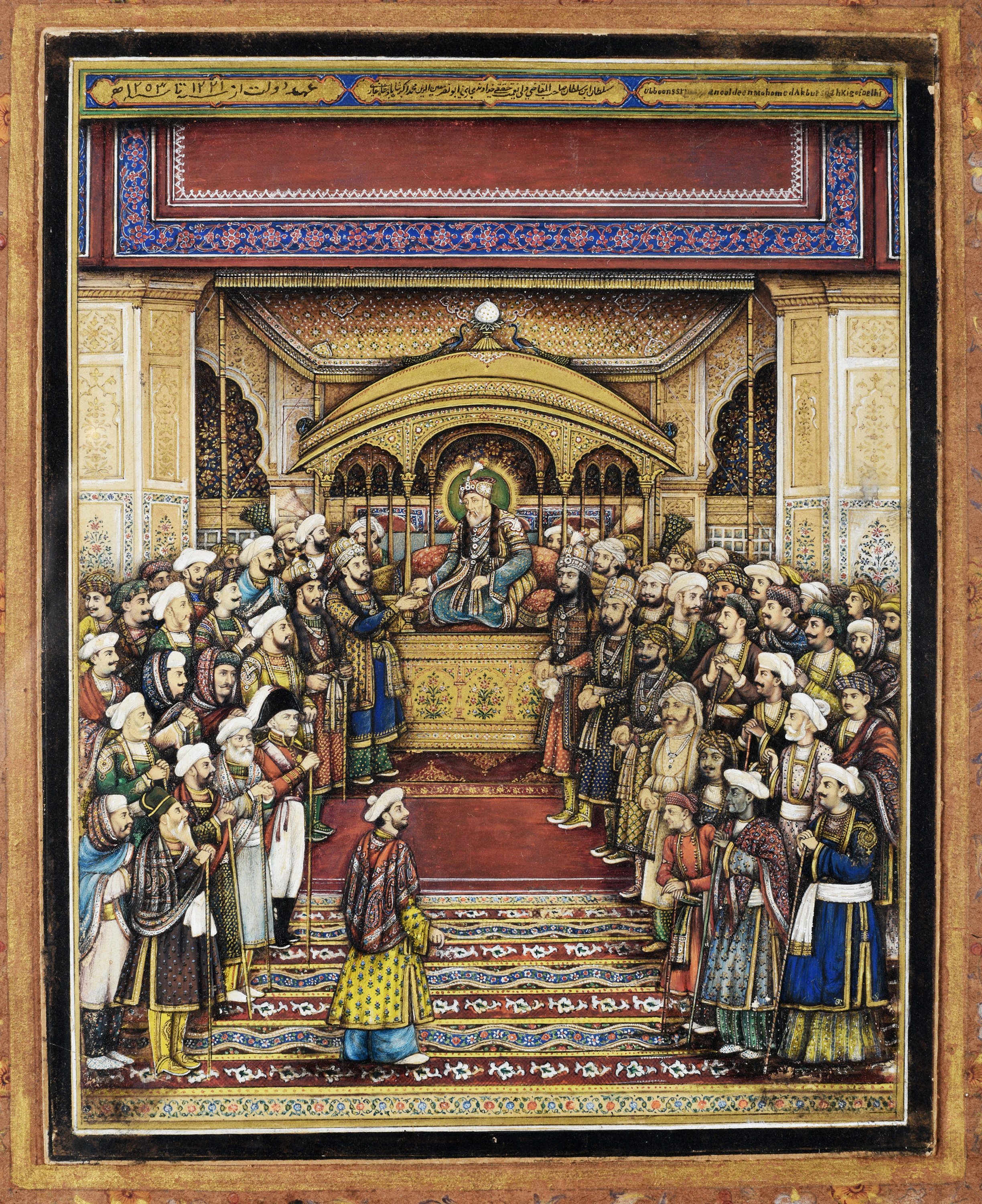Discover, Learn, immerse, Connect
The Court of Shah Alam II
This painting depicting Shah Alam II dates back to the 19th century. It is currently on display at the Indian Miniature Paintings Gallery at the National Museum, New Delhi.
Shah Alam II (also known Ali Gauhar) was the sixteenth Mughal Emperor. He inherited a crumbling and a rather small Mughal empire from his father Alamgir II in 1759. During his reign, the Mughal Empire extended only from Delhi to Palam - a suburb of Delhi, which was aptly described in Persian as 'Sultanat-e-Shah Alam, Az Dilli ta Palam' (The Kingdom of Shah Alam is from Delhi to Palam only). The fortunes of Shah Alam II rarely prospered during his lifetime.
The Peacock Throne in the picture was built by Shah Alam’s ancestor Emperor Shah Jahan to display the wealth, glory and splendour of the Mughal Empire. However, the Peacock Throne shown in this painting is a replica of the original throne. The original throne is said to be stolen by Nadir Shah, a Persian Emperor and was lost after his assassination in 1747. The throne depicted in the painting is a replacement throne modeled on the original and is made of gold and semi-precious and precious stones. The throne, like the original, has twelve columns and four peacocks carrying pearl necklaces - two on either end of the throne and two on top of the throne. The throne was built in the shape of a peacock engraved with precious stones such as rubies, diamonds, emeralds and exquisite pearls were placed in a manner to imitate the colours of a peacock. Three cushions were placed in the centre of the throne. The Emperor sat on a large and round cushion at the back and two flat cushions on either side.
The painting of the Court of Shah Alam II painted by Khairullah portrays the Emperor seated on the Peacock Throne in the center and on an elevated platform highlighting his position in society. The Emperor has a halo around his head, denoting his position as a superior being. Shah Alam’s son Muinuddin Muhammad also known as Akbar I, is seated on his right on a throne platform. Akbar I’s throne is partially lower than that of his father in the painting. On the left side of the Emperor there are two other courtiers holding their staffs. The artist through this painting has tried to recreate an air of luxury.
There have been several theories around the whereabouts of the original Peacock Throne. Some claim the Peacock Throne has been dismantled and its parts were dispersed with or sold around Iran. There is also a claim that the British captured the Throne and while they were transporting it to London the sailing got shipwrecked and the sank, and no one has been able to locate it till date.
 Government of India
Government of India



